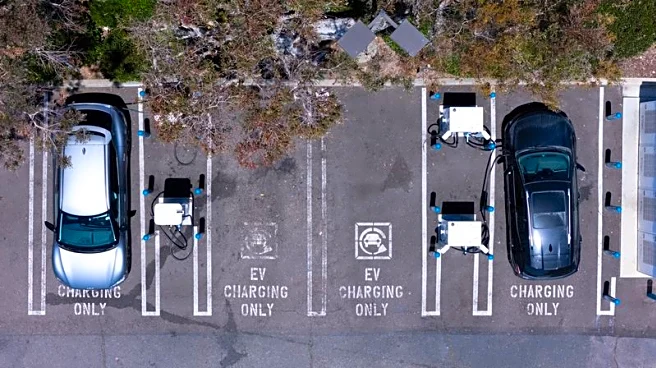What's Happening?
Skims, the shapewear brand launched by Kim Kardashian in 2019, has transitioned from a digital-first model to a significant physical retail presence. The company now operates 18 stores across the United
States and two in Mexico, with plans for further global expansion, including a flagship store in London. This strategic shift has contributed to Skims reaching a $5 billion valuation, supported by a $225 million funding round led by Goldman Sachs Alternatives. The brand's move into physical retail is complemented by its collaboration with Nike on the NikeSkims range, which sold out rapidly, showcasing Skims' ambition to leverage immersive retail experiences as a growth engine.
Why It's Important?
Skims' pivot to physical retail highlights a broader trend in the retail industry where brands are increasingly adopting omnichannel strategies. This approach allows companies to offer consistent experiences across digital and physical platforms, enhancing customer engagement and trust. The success of Skims' strategy, evidenced by its significant sales growth and valuation, underscores the potential for physical stores to serve as experience hubs rather than mere points of sale. This development could influence other digital-first brands to explore similar expansions, potentially reshaping the retail landscape by integrating immersive experiences with traditional shopping.
What's Next?
Skims plans to continue its global expansion, with the opening of a flagship store in London's Regent Street next year. This move aims to provide British customers with an immersive experience that complements its online presence. As Skims continues to grow, it may further explore collaborations and partnerships to enhance its product offerings and market reach. The company's strategy could prompt other digital-first brands to consider similar transitions, potentially leading to increased competition in the physical retail space.
Beyond the Headlines
The shift from digital to physical retail by Skims challenges the narrative that physical stores are obsolete. Instead, it positions them as vital components of a comprehensive retail strategy that blends online convenience with in-store experiences. This approach not only deepens customer engagement but also builds cultural cachet, potentially setting a precedent for other brands seeking to enhance their market presence through experiential retail.













